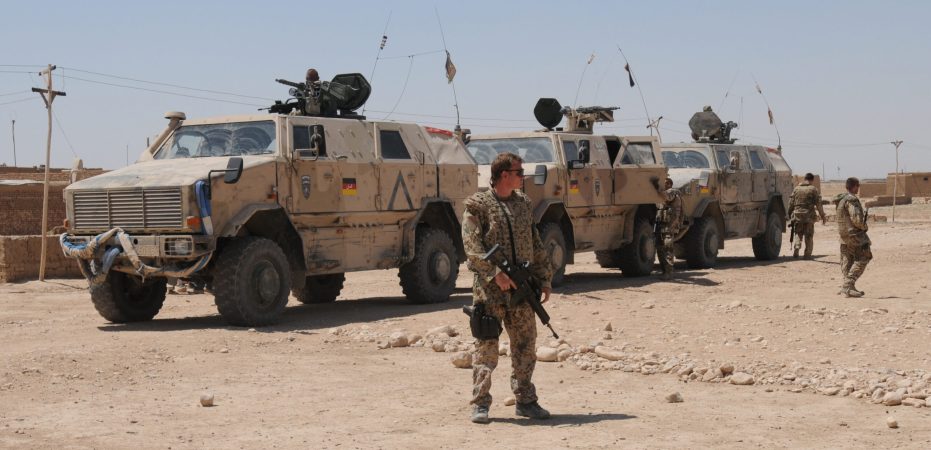Ukraine is getting a whole slew of new missiles. Well, new to them. The MIM-23 Hawk air defense system is literally a museum piece in most of the world. But the newest U.S. aid package confirms recent rumors that Taiwanese launchers are headed to Ukraine, joining Spanish ones already in theater. The Russo-Ukrainian War is likely to be the final and most active period of the weapon’s history.
Hawk missiles solve a major problem
Ukraine looks to receive a variety of Hawk missile types and systems originally designed and deployed over decades. The Spanish version already promised and likely in Ukraine is the most advanced. It uses the newer Sentinel Radar that American forces use for its systems. And it can work with a variety of modern missiles. Norway and American defense companies upgraded the system and proved it works well with the Evolved SeaSparrow Missile, or ESSM.
The newer Hawk systems also have the network backbone to work with the National Advanced Surface-to-Air Missile System. Ukraine already has the system thanks to donations and deals with Norway, the U.S., Lithuania, and more. U.S. Coordinator for Strategic Communications at the White House National Security Council John Kirby claimed the system successfully engaged 100 percent of its targets through November 2022.
The best thing about NASAMS: It works with many missiles, including Hawk but also Patriot, the ESSM, Sidewinders, AMRAAM, and more. So Ukraine will have more flexibility to fire Hawk at all the targets that missile can kill, helping the country conserve more modern missiles for more challenging targets.
Ukraine’s largest source of missiles appears to be the new, rumored U.S.-Taiwanese transfer that will give it older Phase III Improved Hawk Missiles. The U.S. refused to confirm the transfer when The Drive’s The War Zone reached out for comment. But the necessary funds were designated in recent U.S. aid packages.
With all of these developments together, Ukraine should have lots of missiles that work with a well-proven, well-understood system. If it gets the rumored 100 Taiwanese launchers, it could technically field multiple Hawk batteries. Still, reports indicate Ukraine will stick with one Hawk battery. Ukraine fires dozens of air defense missiles per day, so it won’t take long to burn through the new missiles.

The birth and life of the Hawk system
Hawk as a system dates back to the 1950s. The first iteration, now known as Basic Hawk, first fielded in 1960. The system quickly became the backbone of U.S. air defenses in Europe, South Korea, and more. During the Cuban Missile Crisis in October 1962, the U.S. rapidly ordered more launchers, missiles, and parts to ensure security. The contractors fulfilled requests in just three days, on average.
At the end of 1962, America came shopping for an improved version of the missile. While Raytheon worked on that, the Marine Corps took the first systems overseas to Vietnam in 1965, and a battalion deployed to Israel.
In 1967, Israeli forces downed several Egyptian jets with Hawk during the Six Day War. Also, Raytheon began delivering prototype versions of the new, self-propelled Hawk. And, America signed a contract with Japan to allow foreign production of the missile system.
By 1969, the first Improved Hawk production prototypes rolled out. The Improved Hawk quickly became the new standard, and its derivatives of this version that served in Taiwan until recently and are likely headed to Ukraine.
The newer, MIM-104 Patriot System fired its first test flight in November 1969. The Patriot was originally supposed to replace many Hawk and Nike systems. But America found the price tag for Patriot steep. The Patriot is also less mobile than a Hawk battery, and so the systems worked together for decades. In fact, in 1979, a study found that the two were complementary systems that should work together.
Upgrades continued with a new, guided Hawk system that flew a missile through the nose of a targeted F-80 in 1981. The following year, the Army decided to retain the Hawk system indefinitely. And the Army started transferring the system to the Marine Corps and the Army Reserve components.
Soon after, in 1985, work began on an Hawk upgrade to help it kill incoming missiles. By ’88, the Hawk could engage ballistic missiles as part of a Patriot battery. The two systems worked together, with the Patriot radar sending target data to the Hawk launcher.

The missiles retire at home, serve overseas
In the 1990s, the Hawk system deployed to Operation Desert Shield and Operation Desert Storm and was used by Army units assigned to Drug Enforcement Agency missions.
But with the Cold War ended, the Army and then Marine Corps divested from the old Hawk systems. Neither branch ever fired the Hawk system in combat.
But the system has remained popular with budget-conscious militaries and those who face older airframes. As Ukraine’s threat mix includes a lot of drones, slower jets, and helicopters, the Hawk is still a viable system for it. It allows it to shoot down easier threats with a cheaper, easy-to-source missile.
And since very few operators fired many missiles from the weapon, they could quickly become the most-intense user of the missiles of all time.
But Ukraine won’t be the only country still using the Hawk. American allies like Bahrain, Kuwait, Sweden, and even Turkey still deploy it. That means that Ukraine will have a laundry list of countries from which to buy more missiles, as they will likely need.









